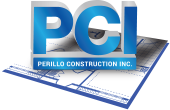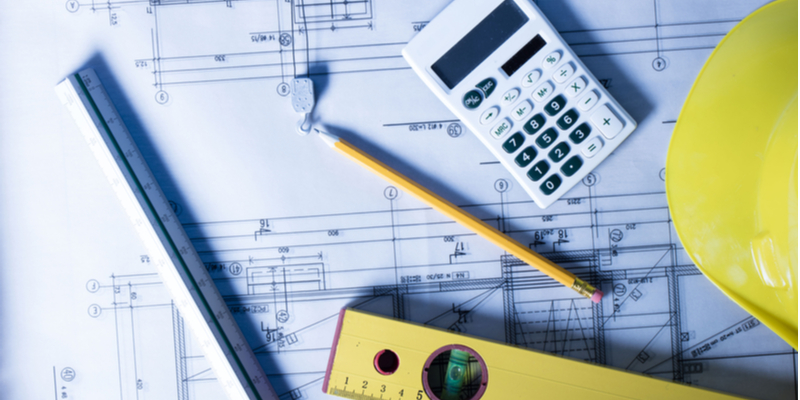As you search for the ideal space to grow your business, you have to consider multiple costs – the cost of rent as well as the build out costs required to get the space ready for your business. Trying to estimate cost of a build out can be challenging given you must do much of the planning prior to signing the lease for the property. Perillo Construction has managed thousands of successful projects and offers these tips to help you determine exactly what affects your build out costs.
1. The Overall Space
When choosing your new commercial space, the overall condition of the space you are considering plays a huge role in determining the cost of your build out. Talking with a contractor, a project manager, or your broker regarding the build out also requires you to learn the industry jargon in order to understand factors which can affect costs. The space you are looking at will either be termed “Second Gen” also known as Second Generation or Shell Space. Here’s the difference:
- Second Gen is the term applied to space which has been previously occupied by a tenant. In most cases, this means a build out has already occurred and the space you are looking at is in move in condition. It shouldn’t need to be demolished and completely renovated, which would increase your build out costs. Instead, the space would only require minor renovation requiring a lower amount of work and materials, thus a lower costs for your build out. Generally, a Second Gen space may need aesthetic changes like paint, carpet, flooring, and possible some minor electrical or plumbing work. Over all, Second Generation space needs a small build out budget.
- Shell Space is a brand new building where the space is essentially a shell with no improvements.
For your business, this means you can design the interior to suit your business without the need
That gives new tenants the chance to do renovations without having to remove any preexisting structures.
Also known as “capital improvement projects,”, these build-outs often involve major alterations to the space’s look and infrastructure.
Companies wanting the chance to completely customize their office space, such as Google at 500 W 2nd, will generally look for space in this condition.
Shell space generally requires a larger budget than existing space.
2. Size of the Space
As with most things, typically you can expect that the larger your project, the more expensive it will be in total. More materials are needed, and more labor will be required to cover the full expanse of the project.
However, economies of scale do play a big role in most buildout projects. This means that, the larger the space, the lower your costs will be on a per square foot basis.
These fixed costs, along with discounts for ordering supplies in bulk, usually mean large projects will have a lower price per square foot compared to their smaller counterparts.
For more about budgeting for your project cost, check out our article: Cost to Build Out Office Space: How to Plan and Budget
3. Quality of the Finishes
The quality of the finishes you choose will also play a big role in determining the cost of your project. Do you want high quality woods, or will laminate be sufficient?
Your answers to questions like these will help determine how much you will likely need to spend on higher quality, higher priced items.
An example of a high-end law firm finish out that AQUILA’s project managers have coordinated.
Law firms are a great example of build-outs putting a lot of money into the finish quality; these companies often have large desks, wood accents and are generally willing to pay more for quality finishes in areas where they have client interaction. In contrast, a small tech company comprised of recent college graduates may be satisfied with simple finishes and concrete floors. Their client interaction may be limited to phone calls and video conferencing and spending more on finishes may not be something they deem as necessary to conduct business.
4. Office Layout & Amenities
The office atmosphere you design can also influence the overall cost of your project.
Office spaces with multiple private offices, a handful of conference rooms and several break rooms can be great for employees who like privacy at work, but this type of layout also means you will be paying more during the build-out process. Because every office will require walls and every conference room will require additional wiring, adding these separations can significantly raise your overall cost.
In contrast, an open floor plan can lower these costs by taking away the additional walls and wiring. Having one large space that all employees share means less work and materials must be put towards the project.
Additionally, adding amenities such as break rooms and conference rooms can add expense.
5. Timeline
Planning far ahead is essential to the office buildout process. It can take a significant amount of time to find contractors, make design decisions and gather the materials necessary. Starting the planning process months before the project needs to be finished can not only result in a better finished product, but help you stay within your project budget.
However, if you do start the process late or have to make major changes midway through, it is likely going to cost you. This is why it is important to have a preliminary project schedule which will show you important milestones and the critical path of the project.
Ready to Get an Estimate?
As you can see, there are many variables that go into the cost of your office build-out project.
If you are ready to move forward with your project, or want to learn more about the process, contact our project management team today.
Office build-outs are complex, and, of course, these variables do not cover everything, but they are still a good starting point. Ready to start blocking out your office build-out budget? Download our Office Build-Out Budget Calculator.

